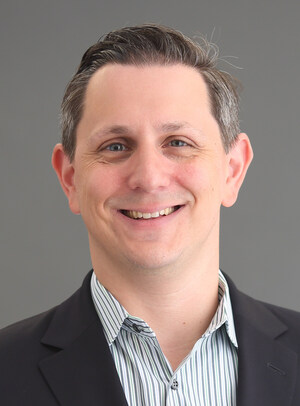PJM and Argonne National Laboratory Collaborate to Study Guidelines for Solar Resources
Argonne to Support PJM Distributed Energy Resources Ride-Through Task Force
VALLEY FORGE, Pa., April 2, 2019 /PRNewswire/ -- PJM Interconnection has joined forces with the U.S. Department of Energy's Argonne National Laboratory to support the integration of distributed energy resources such as residential and commercial solar into the power grid serving 13 states and the District of Columbia.
Under a Cooperative Research and Development Agreement, Argonne is supporting PJM's Distributed Energy Resource Ride-Through Task Force, which is developing guidelines for "ride through" and "trip" requirements. These guidelines are important for PJM, which manages the bulk electricity system and wholesale electricity market serving 65 million people, to be able to integrate the increasing number of solar installations into its footprint.
"Our primary mission is reliability, and we are preparing our system for the advent of more distributed energy resources so that we can seamlessly operate and understand their behavior, both during normal operations and times of system stress," said Chantal Hendrzak, executive director – Applied Innovation & Market Evolution for PJM.
PJM coordinates energy resources and ensures reliability for a system stretching from the East Coast to the Midwest and is managing a network with more solar input than ever before. Two states within its footprint, New Jersey and North Carolina, are among the country's top 10 for solar capacity per capita.
Solar as a Distributed Energy Resource
Much solar energy is considered a distributed energy resource, commonly referred to as DER in the industry. These resources are located on the lower-voltage distribution side of the grid – which in the case of solar, could mean a customer's rooftop. DER can also include battery storage, wind turbines, combined heat and power plants, and other resource types.
Prior to the arrival of DERs, the distribution system was designed for one-way power flow. Electricity moved from power plants, through a transmission network, stepped down to a distribution system and finally to customers. The fact that generation now also comes from the distribution level creates a new set of design considerations.
When an unexpected occurrence like storm damage or malfunctioning equipment disrupts power flow, the system is designed to respond with a delicate balance in mind. DER settings determine whether they "ride through" – meaning stay connected – or trip offline when there is a disruption at either the transmission or distribution level of the grid. Riding through an event helps keep power flowing reliably, while tripping offline protects against damage and safety concerns.
Argonne's Expertise
With more than 80 researchers who study the grid, Argonne National Laboratory has long developed modeling and analytics tools that help inform decision makers about issues related to electricity systems.
"Our team has directly relevant experience in modeling and usage of simulation tools, and it has conducted similar analyses for DOE and the North American Electric Reliability Corporation that can contribute to this joint effort," said Ning Kang, an Argonne staff scientist who is leading the project with PJM.
Argonne sent Rojan Bhattarai, another scientist from the lab, to work onsite at PJM to support the PJM task force. Bhattarai will analyze regional data, develop power system models with DERs and help PJM stakeholders fine-tune DER operational settings to maintain optimum system reliability.
The combined PJM-Argonne team will study the impact of DER trip and ride-through settings to help PJM stakeholders reach a consensus and inform technical guidance that utilities and states can apply to DERs across the PJM footprint.
Read more about the collaboration effort at PJM Inside Lines.
PJM Interconnection, founded in 1927, ensures the reliability of the high-voltage electric power system serving 65 million people in all or parts of Delaware, Illinois, Indiana, Kentucky, Maryland, Michigan, New Jersey, North Carolina, Ohio, Pennsylvania, Tennessee, Virginia, West Virginia and the District of Columbia. PJM coordinates and directs the operation of the region's transmission grid, which includes over 84,236 miles of transmission lines; administers a competitive wholesale electricity market; and plans regional transmission expansion improvements to maintain grid reliability and relieve congestion. PJM's regional grid and market operations produce annual savings of $2.8 billion to $3.1 billion. For the latest news about PJM, visit PJM Inside Lines at insidelines.pjm.com.
SOURCE PJM Interconnection
Related Links
WANT YOUR COMPANY'S NEWS FEATURED ON PRNEWSWIRE.COM?
Newsrooms &
Influencers
Digital Media
Outlets
Journalists
Opted In






Share this article